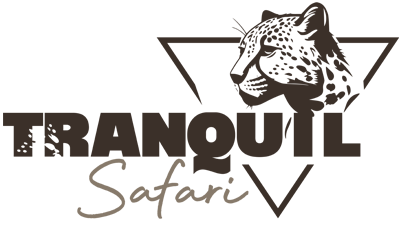Barely 10 years since its establishment, Rumanyika-Karagwe National Park is a compact pocket of wild wonder that punches way above its weight. Gazetted in July 2019 from a shrinking slice of the old 800-square-kilometre Rumanyika Game Reserve—now just 247 square kilometres due to human pressures—it’s one of Tanzania’s newest protected areas, born under President John Pombe Magufuli’s drive to safeguard frontier ecosystems.
Straddling Karagwe and Kyerwa districts in Kagera Region, it sits in the lush Kishanda Valley where Tanzania’s borders kiss Uganda and Rwanda, linking seamlessly to neighbours like Burigi-Chato National Park. Kagera River threads through like a lifeline, feeding swamps and drawing life from the land. Though small, this park’s deep valleys, acacia-draped hills, and riverine hideaways brim with potential for intimate safaris—think uncrowded game drives where a leopard’s spots catch the light just right. It’s raw, resilient, and ready for explorers who crave the road less dusted.
Vegetation and Scenery
At Rumanyika-Karagwe’s heart lies a dramatic incision: a steep-sided valley cradling a meandering river that fans into glassy lakes and papyrus-choked swamps, creating a watery mosaic teeming with hidden drama.
Lower slopes plunge into dense montane forests and tangled thickets of wild figs, alders, and understory shrubs—humid havens where mist clings like a secret and orchids nod in the breeze. Climb higher, and the scene opens to expansive acacia savannas: tall, golden grasslands studded with flat-topped trees, sculpted open by seasonal fires that prevent woody takeover. This layered vegetation— from swamp sedges to brachystegia woodlands—supports a riot of wildflowers in June–August, turning hillsides into butterfly banquets.
Sunrises paint the escarpments in peach and amber, while sunsets gild the river like molten gold. It’s a photographer’s dream: intimate vistas without the sprawl, where every bend reveals a new frame of emerald valleys framed by rocky outcrops.
Wildlife of Rumanyika-karagwe
Don’t let the size fool you—Rumanyika-Karagwe packs a diverse punch, with animals clustering around perennial waters for reliable sightings. Elephants lumber through thickets, their trumpet calls echoing off valley walls; giraffes stretch for acacia crowns like living sculptures; and zebras stripe the open plains in black-and-white herds.
Buffaloes and waterbucks gather at swamp edges, while impalas and bushbucks dart through the undergrowth, ever-watchful for leopards that melt into the dappled shade. Rarities add thrill: roan antelopes with their punk-rock manes ghost the grasslands, elands bound like oversized deer, and hippos grunt from river pools guarded by lurking crocs. Lions prowl the fringes, warthogs root in the mud, and baboons whoop from fig groves. Whispers of chimpanzees in the montane forests hint at deeper discoveries—scouts are mapping potential troops.
Birdlife
With altitudes from 1,200 to 1,800 meters fueling a veggie smorgasbord, Rumanyika-Karagwe hosts a feathered frenzy—over 200 species, from swamp skulkers to savanna acrobats.
Dawn breaks with a chorus: grey-headed kingfishers flash turquoise darts over the river, African wattled lapwings pipe their “did-he-do-it” calls from muddy banks, and fish-eagles hail from fever trees. Papyrus gonoleks weave crimson threads through the reeds, while migrant hordes swell the ranks December–February, turning skies into avian highways. Butterfly chasers hit paydirt in the dry months, with iridescent flutters amid blooming forbs. It’s not Arusha-level intense, but the intimacy shines—spot a rare crowned crane dancing in a lek or a hammerkop’s mud-mound nest from your vehicle.
Things to do at Rumanyika Karagwe
Rumanyika-Karagwe keeps it classic and close: dawn game drives rumble through acacia lanes for zebra dawn patrols or leopard siestas; night drives crank the thrill, headlights picking out bushbabies and genets.
Guided walks hug river trails, ears tuned to hippo yawns and impala alarms, while bird hides overlook swamps for lapwing stakeouts. Bush breakfasts under acacias add picnic poetry, and photographic setups capture valley sunsets. For culture buffs, nearby villages share Kagera beekeeping lore or craft demos. Hunting lingers from reserve days in controlled blocks, but the park leans photographic—perfect for low-impact vibes. Emerging: canoe outings on the river for watery wildlife peeks.
Getting There
Tucked remote but reachable, start with flights to Bukoba or Chato airports (commercial from Dar or Arusha), then charter light planes to Ithanda Village airstrip—a quick hop over the hills.
From there, it’s a 110-kilometre 4WD jaunt to Murongo Gate. Road warriors: Bukoba to Murongo clocks 220 kilometres (4–5 hours on graded tracks), Chato’s 327 kilometres (6–7 hours). Uganda entry via Murongo eases cross-border loops. Local matatus shuttle from Kaisho (18 km), Kyerwa (27 km), or Kaitambuzi (27 km) for budget access. Dry season rules—rains turn reds to rivers.
Climate and Best time to visit
Expect equatorial warmth with elevation twists: valleys sizzle to 41°C by day, hilltops chill to 13°C at night—pack layers and sunscreen.
East gets 750 mm rain yearly, west doubles to 1,300 mm, mostly January–April’s downpours that green the bush but glue the roads. Dry July–October? Crystal-clear access, concentrated game at water.Birders and bloom lovers: June–August for floral fireworks and flutters. Migrants peak December–February, but pair with dry for ease. As of 2025, entry fees hold at $30 USD adult/day (non-EAC), $20 child—value for the views.
Accommodation
Keeping its frontier feel, options stay simple: ranger-guarded campsites like Kishanda Valley or riverbank spots offer ablutions, fire rings, and canvas vibes (book via TANAPA). Seasonal tented camps provide en-suite comfort with mess tents for sundowners—think $150–250/night full-board.
Fly-camps for walkers add adventure. Nearby Karagwe lodges (e.g., budget guesthouses in Kyerwa) bridge for overnights, but park immersion wins.
